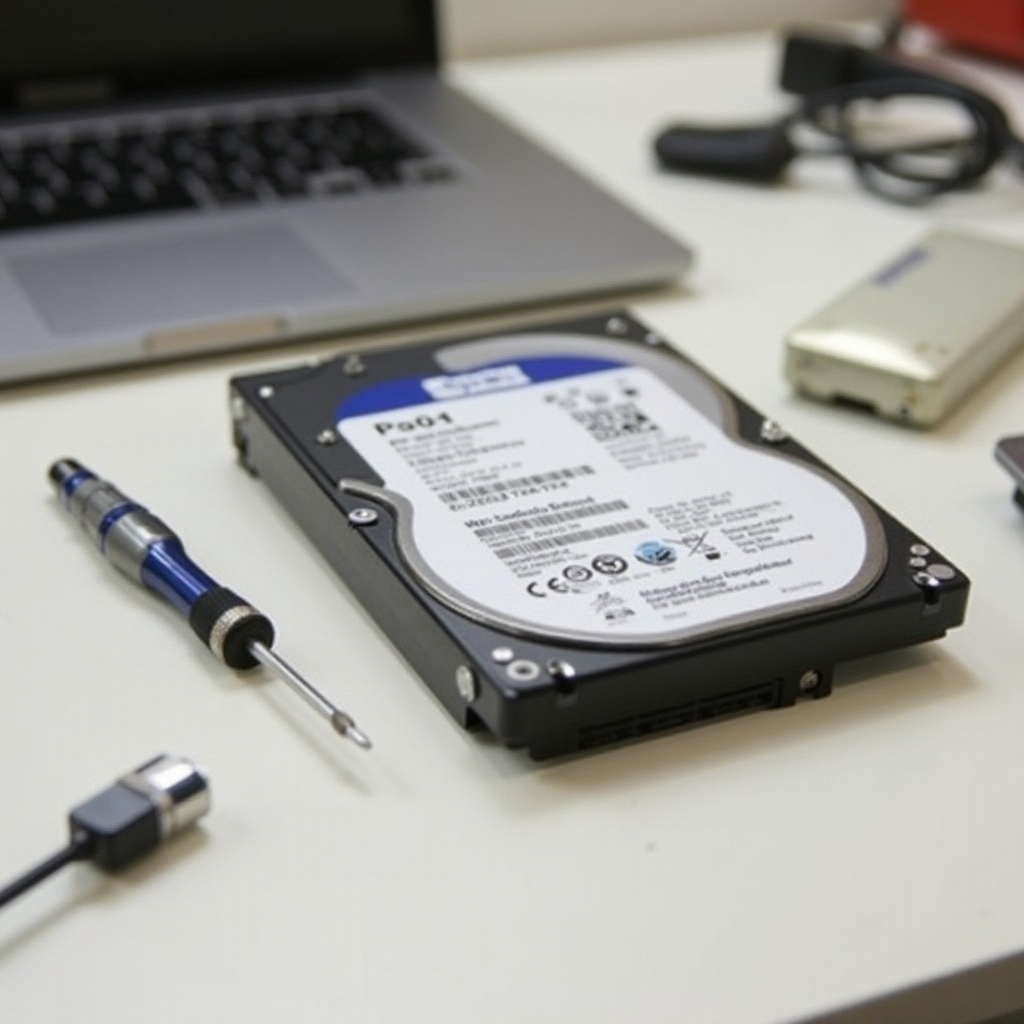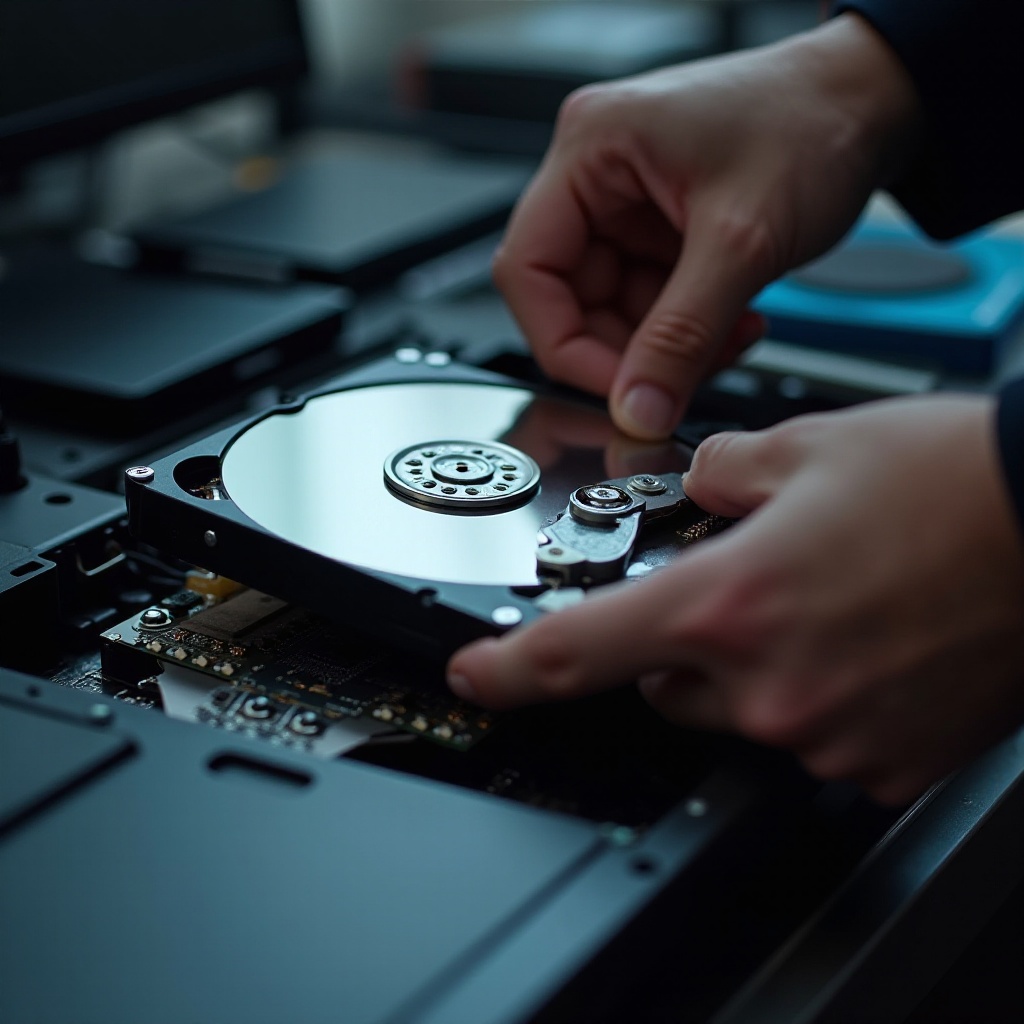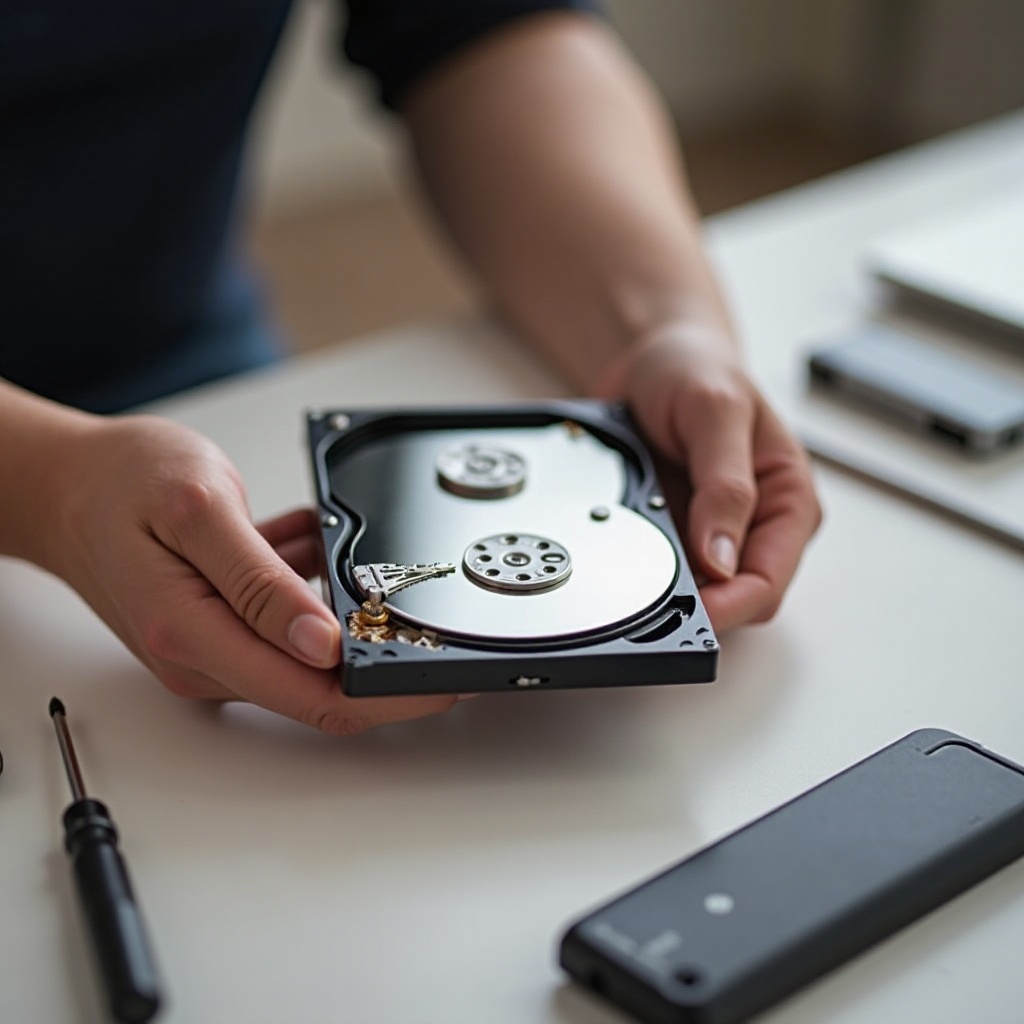Introduction
If your internal hard drive has been rendered obsolete by an upgraded computer setup, don’t discard it just yet. Transforming it into an external storage device not only offers an economical solution but also provides a valuable avenue for extending its utility. This guide will meticulously walk you through converting your internal hard drive into an external device. As you prepare your old drive, from ensuring data safety to picking the right tools and gearing up for installation, we get into every nitty-gritty detail for a hassle-free experience. Let’s dive into optimizing your storage through repurposing.

Why Convert an Internal Hard Drive to External?
Every internal hard drive holds potential beyond its original intended use. Even when a computer no longer functions, its hard drive can persist as an essential storage device. By converting it into an external drive, longevity and versatility are assured. Such a drive opens up the convenience of portability, allowing data access on varying devices supporting different ports. Additionally, external drives serve as optimal solutions for off-site backups, conveniently housing vital documents and hefty multimedia files. This transition emphasizes eco-friendliness by minimizing waste and amplifying a drive’s capability, making it a wise utilization of existing resources.
Preparing Your Internal Hard Drive for Conversion
Before beginning the conversion process, meticulous preparation of your internal drive is vital to avoid disruptions and ensure seamless functionality post-conversion.
Data Backup Essentials
-
Back Up Your Data: Begin by transferring important files from the internal hard drive to another secure location, such as another drive or a cloud backup service. Validate the backup integrity to certify completeness.
-
Clear the Drive: Following data backup, proceed to format the drive for erasing all personal information, preparing the drive for its new role.
Tools You’ll Need for the Process
The right toolset is pivotal in converting an internal drive into a reliable external storage device. Here’s what you’ll need:
- Screwdriver: Essential for dismantling the computer case and accessing the drive.
- Hard Drive Enclosure: Crucial for transforming the internal drive into an external format.
- USB Cable: Verify compatibility with the chosen enclosure’s port specs.
- Anti-static Wristband (optional): Utilize for safeguarding components against static-caused damage.
Being well-prepared with the proper equipment will mitigate last-minute setbacks and ensure a smooth transition.

Choosing the Right Enclosure for Your Hard Drive
Selecting an appropriate enclosure is a fundamental step toward realizing the potential of your hard drive as an external storage device.
Understanding Compatibility and Connectivity
First, ascertain your hard drive’s dimensions and interface. Common dimensions include 2.5-inch for laptops and 3.5-inch for desktops. Interfaces typically range between SATA and IDE, with SATA holding prevalence. Select an enclosure compatible with these specifics, ensuring it offers connectivity suitable for your needs, such as USB 3.0 or USB-C, to align with modern devices for the best data transfer rates.
Comparing Different Enclosure Options
Enclosure varieties come with differing features, aesthetic appeal, and constructions. Some include in-built cooling systems for thermal management, while others boast resilient designs tailored for durability. Evaluate customer reviews and product assurances to invest in an enclosure aligning with your specific requirements for functionality and reliability.
Step-by-Step Guide to Converting Your Drive
Once preparation is complete, proceed with the actual conversion of the internal drive into an external resource.
Removing the Internal Hard Drive Safely
-
Power Down the Computer: Cease all power sources to your device to minimize the chances of electrical hazards.
-
Open the Computer Case: Use a screwdriver to access the internal components, referring to your device’s manual for specific disassembly instructions.
-
Extract the Drive: Carefully detach any connected cables, gently remove the drive from its housing.
Installing the Drive into the Enclosure
-
Open the Enclosure: Follow the manufacturer’s guidelines to access the enclosure interior.
-
Insert the Drive: Align and secure the drive’s connectors with the enclosure interface, sliding it carefully into place.
-
Secure the Drive: Utilize screws or clips to ensure the drive remains firmly positioned to avoid disconnections.
Setting Up Your New External Hard Drive
-
Reassemble the Enclosure: Seal the enclosure following the provided instructions.
-
Connect Via USB: Use a compatible cable to establish a connection between your newly crafted external drive and your device.
-
Test the Drive: Ensure the device identifies the drive, formatting if needed, and transfer test files to verify operational status.

Maximizing the Use of Your External Hard Drive
Having set up your new storage solution, it’s time to delve into optimizing its usage for maximum returns.
Optimizing Performance
Maintain the drive’s performance through regular defragmentation exercises, particularly when managing small files. Opt for enclosures with faster interfaces to enhance data transfer speed and efficiency.
Security Tips for Portable Drives
Data security is paramount. Encrypt sensitive information and employ password protection options on available levels. Maintain a substitute backup solution to mitigate the risks associated with potential data loss.
Conclusion
Turning an old internal hard drive into an external storage powerhouse is not only a cost-effective practice but extends its practical life significantly. Proper preparation, the right tools, and detailed instructions can turn an outdated drive into a practical storage solution, fostering better data management while also contributing to sustainability efforts by curtailing electronic waste.
Frequently Asked Questions
Can I use any internal hard drive as an external drive?
Most internal hard drives can be converted, but checking compatibility with enclosures and connectors is essential.
What are the risks involved in converting an internal drive to an external one?
Potential risks include causing physical damage during the conversion or encountering data loss if data isn’t backed up beforehand.
How do I troubleshoot if my external drive isn’t recognized?
Verify all cable connections, update drivers, and confirm the drive is formatted correctly for your operating system. Advised to reboot the system if issues persist.